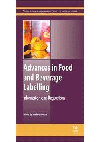Bioengineered disclosure compliance deadline is approaching
Starting on Jan. 1, 2022, all retail food and beverage packaging, including dairy products, must comply with the National Bioengineered Food Disclosure Standard rule.

While it is nearly one year away, the mandatory compliance date for the USDA Agricultural Marketing Service’s (AMS) National Bioengineered Food Disclosure Standard rule is fast approaching, and it has implications across the dairy supply chain. Starting on Jan. 1, 2022, all retail food and beverage packaging, including dairy products, must comply with the standard, known in the food industry as the “BE Rule” or “NBFDS.” This means that all mandatory bioengineered (BE) disclosures must be indicated on retail dairy products, and companies must maintain records to substantiate their BE labeling decisions.
For many dairy processors, making a BE labeling decision and maintaining the necessary documentation has been a long process. Obtaining necessary BE information about flavorings, enzymes and other ingredients from third-party suppliers has been a challenge, as has the exact scope of documentation needed to be maintained by the processor.
Although AMS has held webinars on the BE rule and there has been industry education, many smaller suppliers were unaware of the rule and its specific terminology and recordkeeping requirements. This has placed the burden on many dairy processors to educate and follow up with their suppliers to ensure they have the appropriate records.
No easy task
The learning curve can be steep. The new BE rule introduces some new terminology with specific regulatory definitions and a new “BE Food List.” Moreover, when it comes to commonly used highly refined ingredients originating from the BE Food List — such as corn oil from BE corn and sugar from BE sugar beets — decisions to not use the BE label require recordkeeping to substantiate the absence of detectable levels of modified genetic material.
Documentation turns on AMS guidance for selecting testing methodologies or acceptable validation of refining processes. However, this guidance was not issued until July of 2020, leaving many suppliers and manufacturers unsure of whether existing industry refining and testing processes would meet AMS standards for the purposes of making a BE labeling decision. Since the process for designing and producing a product label can take 18 months to two years, the AMS guidance could not come soon enough.
There are some questions about whether the Biden administration will seek changes to the rule or its implementation. At the time of this writing, former USDA Secretary Tom Vilsack was tapped by President-elect Biden to lead USDA once again. Secretary Vilsack was reported to have had a major role in getting Congress to compromise and get the law passed, but the rule was finalized under Secretary Sonny Perdue. Whether Secretary Vilsack will seek changes to the rule or its implementation is unknown at this time.
There is also uncertainty over whether a pending lawsuit, backed by the Center for Food Safety (CFS), will be successful in challenging the rule. CFS’s legal challenge is still in its early stages, but they seek to invalidate key sections of the rule; for example, those that allow manufacturers to avoid labeling highly refined foods lacking detectable levels of modified genetic material.
IDFA actively engaged in the regulatory process for developing the rule and in seeking the necessary guidance and clarity dairy processing members need to understand and comply with the rule. Over the last year, IDFA worked closely with other food and beverage associations in (unsuccessfully) seeking a compliance date delay and in urging AMS to promptly publish guidance related to testing and refining processes. IDFA has also reached out directly to AMS leadership for additional clarity on recordkeeping.
Labeling transparency is important to the dairy processing industry, as is regulatory certainty. As the deadline approaches, dairy processors will continue to take the steps necessary to ensure compliance.
Looking for a reprint of this article?
From high-res PDFs to custom plaques, order your copy today!









